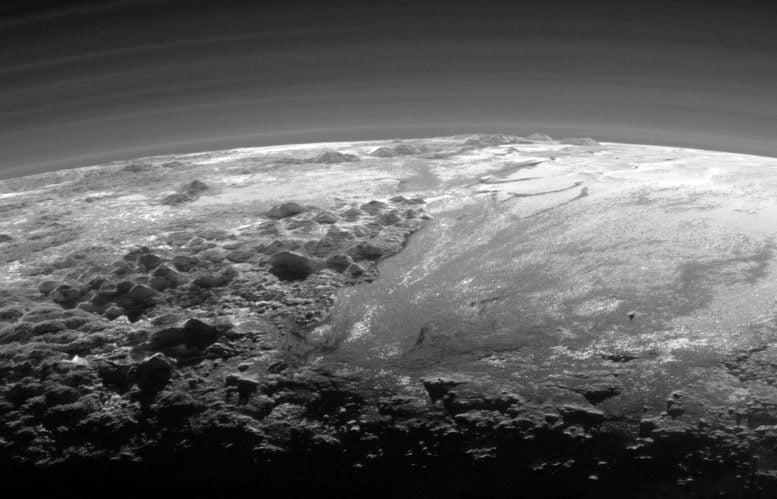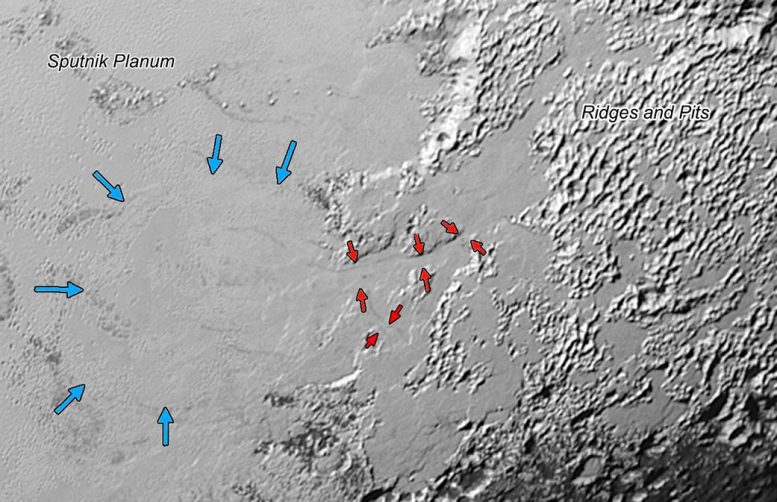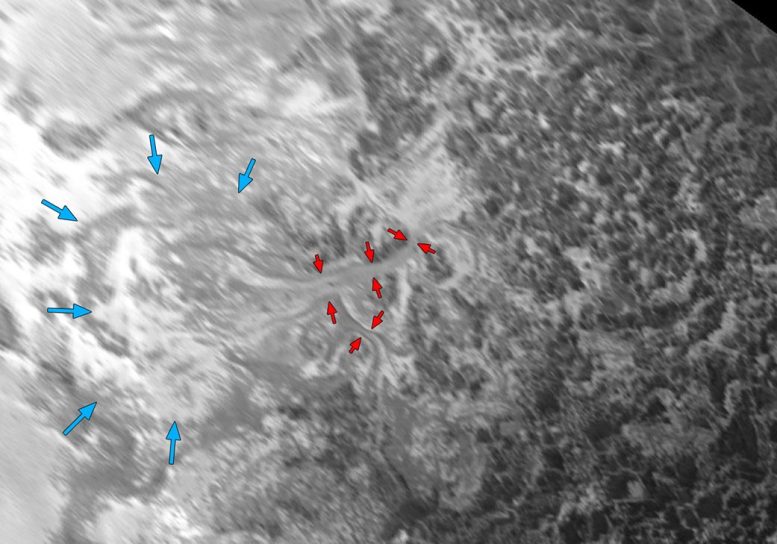This new view of Pluto’s crescent — taken by New Horizons’ wide-angle Ralph/Multispectral Visual Imaging Camera (MVIC) on July 14 and downlinked to Earth on September 13 — offers an oblique look across Plutonian landscapes with dramatic backlighting from the sun. It spectacularly highlights Pluto’s varied terrains and extended atmosphere. The scene measures 780 miles (1,250 kilometers) across. “This image really makes you feel you are there, at Pluto, surveying the landscape for yourself,” said New Horizons Principal Investigator Alan Stern, of the Southwest Research Institute, Boulder, Colorado. “But this image is also a scientific bonanza, revealing new details about Pluto’s atmosphere, mountains, glaciers, and plains.” Owing to its favorable backlighting and high resolution, this MVIC image also reveals new details of hazes throughout Pluto’s tenuous but extended nitrogen atmosphere. The image shows more than a dozen thin haze layers extending from near the ground to at least 60 miles (100 kilometers) above the surface. In addition, the image reveals at least one bank of fog-like, low-lying haze illuminated by the setting sun against Pluto’s dark side, raked by shadows from nearby mountains. “In addition to being visually stunning, these low-lying hazes hint at the weather changing from day to day on Pluto, just like it does here on Earth,” said Will Grundy, lead of the New Horizons Composition team from Lowell Observatory, Flagstaff, Arizona. Combined with other recently downloaded pictures, this new image also provides evidence for a remarkably Earth-like “hydrological” cycle on Pluto – but involving soft and exotic ices, including nitrogen, rather than water ice. Bright areas east of the vast icy plain informally named Sputnik Planum appear to have been blanketed by these ices, which may have evaporated from the surface of Sputnik and then been redeposited to the east. The new Ralph imager panorama also reveals glaciers flowing back into Sputnik Planum from this blanketed region; these features are similar to the frozen streams on the margins of ice caps on Greenland and Antarctica. “We did not expect to find hints of a nitrogen-based glacial cycle on Pluto operating in the frigid conditions of the outer solar system,” said Alan Howard, a member of the mission’s Geology, Geophysics and Imaging team from the University of Virginia, Charlottesville. “Driven by dim sunlight, this would be directly comparable to the hydrological cycle that feeds ice caps on Earth, where water is evaporated from the oceans, falls as snow, and returns to the seas through glacial flow.” “Pluto is surprisingly Earth-like in this regard,” added Stern, “and no one predicted it.”




